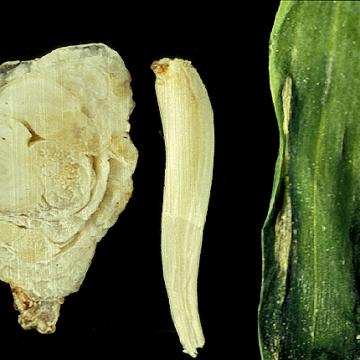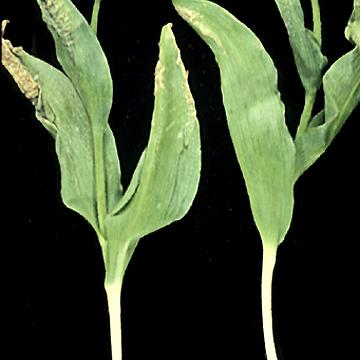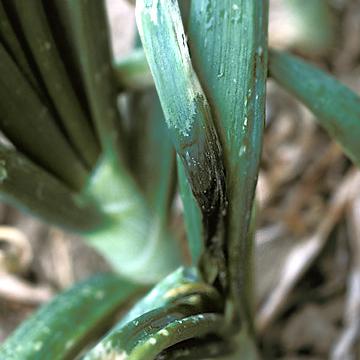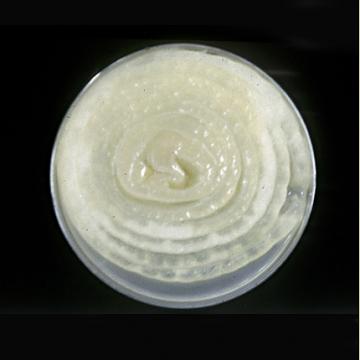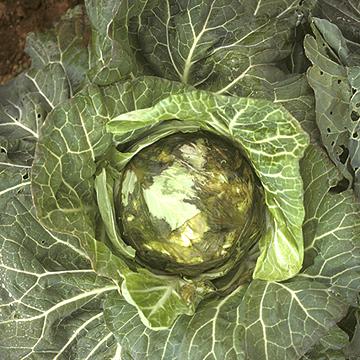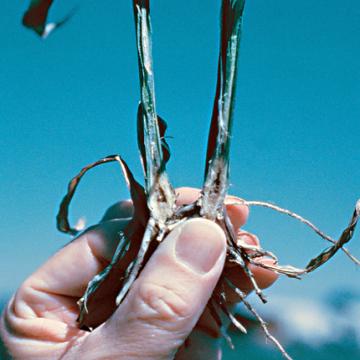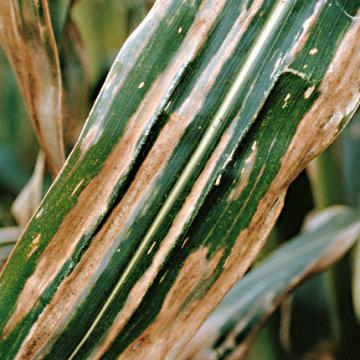DISEASE: Bacterial blight
HOST: Tulip
The disease causes white veins of leaves, yellow vascular bundles, and yellow bacterial slime on bulbs.
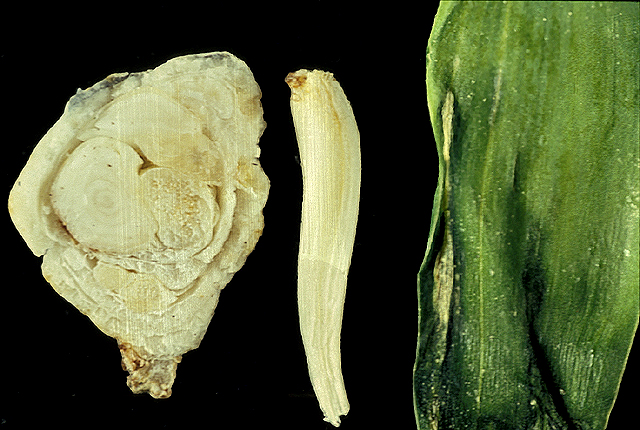
Bacterial blight | Tulip
DISEASE: Bacterial blight
HOST: Tulip (Tulipa sp. 'Paul Richter')
PATHOGEN: Curtobacterium flaccumfaciens pv. oortii
PATHOGEN SYNONYM: Corynebacterium flaccumfaciens subsp. oortii
SOURCE: M. Geesteranus, J. van der Wolf
DISEASE: Bacterial blight
HOST: Tulip
Stunted plants with wrinkled leaves.
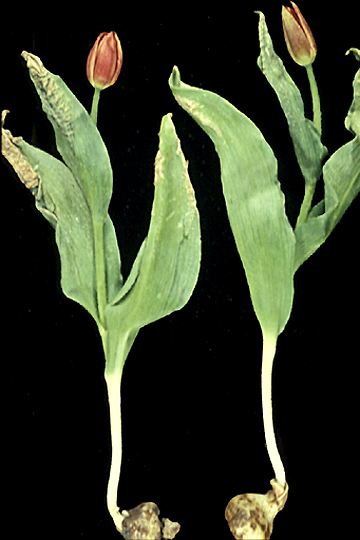
Bacterial blight | Tulip
DISEASE: Bacterial blight
HOST: Tulip (Tulipa sp. 'Paul Richter')
PATHOGEN: Curtobacterium flaccumfaciens pv. oortii
PATHOGEN SYNONYM: Corynebacterium flaccumfaciens subsp. oortii
SOURCE: M. Geesteranus, J. van der Wolf
DISEASE: Bacterial flower stalk and leaf necrosis
HOST: Onion
Dark, rotted areas of stalk and leaves caused by systemic invasion of the pathogen.
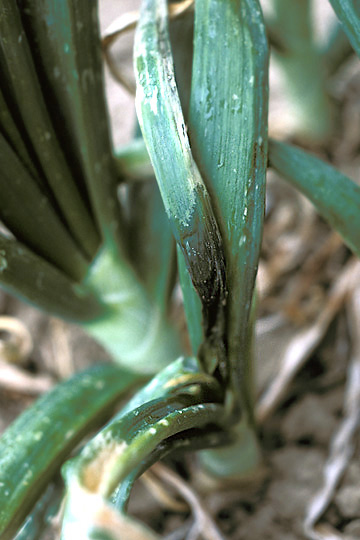
Bacterial flower stalk and leaf necrosis | Onion
DISEASE: Bacterial flower stalk and leaf necrosis
HOST: Onion (Allium cepa)
PATHOGEN: Pseudomonas marginalis pv. marginalis
SOURCE: S. Mohan
DISEASE: Bacterial flower stalk and leaf necrosis
HOST: Onion
Gray-brown rot of onion after inoculation. Disease starts as small, water-soaked lesions that later develop into slimy, gray-brown rot. The disease progresses downward from the stalk and may rot the entire bulb.
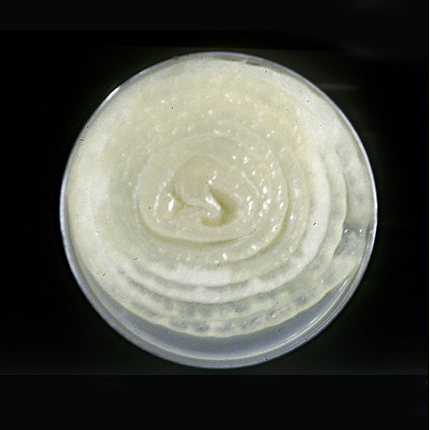
Bacterial flower stalk and leaf necrosis | Onion
DISEASE: Bacterial flower stalk and leaf necrosis
HOST: Onion (Allium cepa)
PATHOGEN: Pseudomonas marginalis pv. marginalis
SOURCE: R. Gitaitis
DISEASE: Bacterial flower stalk and leaf necrosis
HOST: Onion
Leaves with necrosis and rot. The common name for this disease is the same as those used for two other diseases. Also, another common name for this disease is bacterial soft rot.
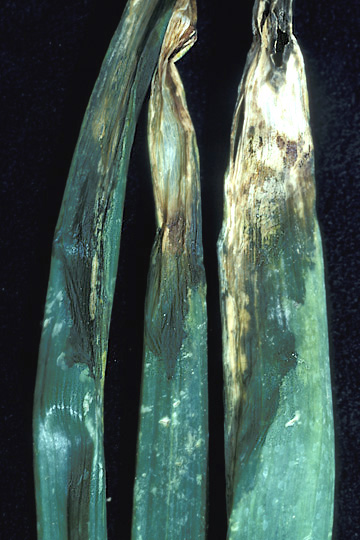
Bacterial flower stalk and leaf necrosis | Onion
DISEASE: Bacterial flower stalk and leaf necrosis
HOST: Onion (Allium cepa)
PATHOGEN: Pseudomonas marginalis pv. marginalis
SOURCE: S. Mohan
DISEASE: Bacterial soft rot
HOST: Cabbage
Rot of cabbage caused by Pseudomonas marginalis pv. marginalis. Rot caused by P. viridiflava has similar symptoms of water-soaking and blackening of cabbage heads. Both diseases occur mainly during the winter season.
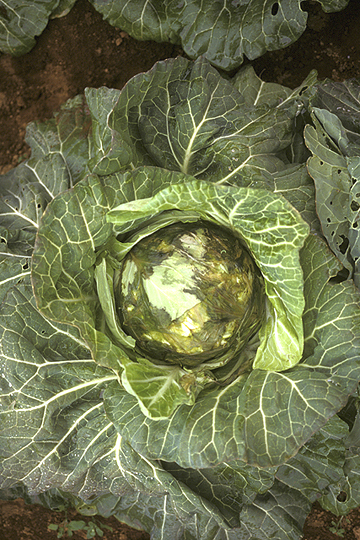
Bacterial soft rot | Cabbage
DISEASE: Bacterial soft rot
HOST: Cabbage (Brassica oleracea var. capitata)
PATHOGEN: Pseudomonas marginalis pv. marginalis
SOURCE: M. Goto
DISEASE: Saber tooth
HOST: Lily
Lily with deformed growth that resembles a saber tooth.
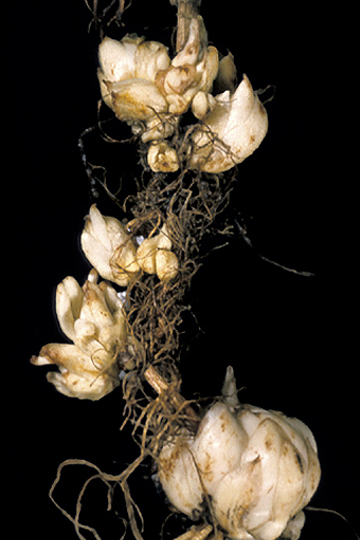
Saber tooth | Lily
DISEASE: Saber tooth
HOST: Lily (Lilium sp. 'Enchantment')
PATHOGEN: Curtobacterium flaccumfaciens pv. oortii
PATHOGEN SYNONYM: Corynebacterium flaccumfaciens subsp. oortii
SOURCE: H. van Hoof, J. van der Wolf
DISEASE: Stewart's wilt
HOST: Corn (Maize)
Wilted seedlings resulting from systemic invasion.
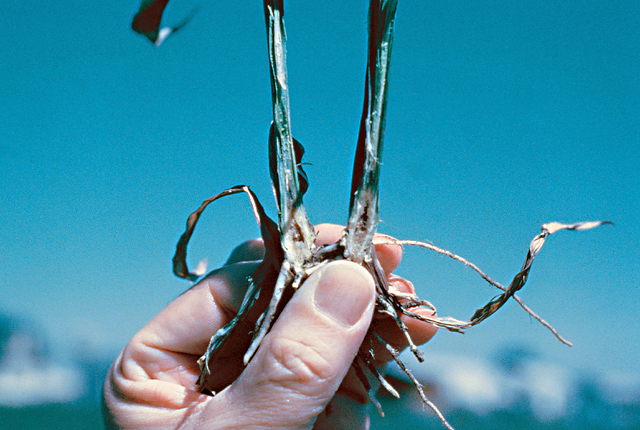
Stewart's wilt | Corn (Maize)
DISEASE: Stewart's wilt
HOST: Corn (Maize) (Zea mays)
PATHOGEN: Pantoea stewartii subsp. stewartii
PATHOGEN SYNONYM: Erwinia stewartii
SOURCE: D. White
DISEASE: Stewart's wilt
HOST: Corn (Maize)
Leaf blight is the dominant symptom of this disease. Lesions begin as gray-green to yellow in color and turn brown in time.
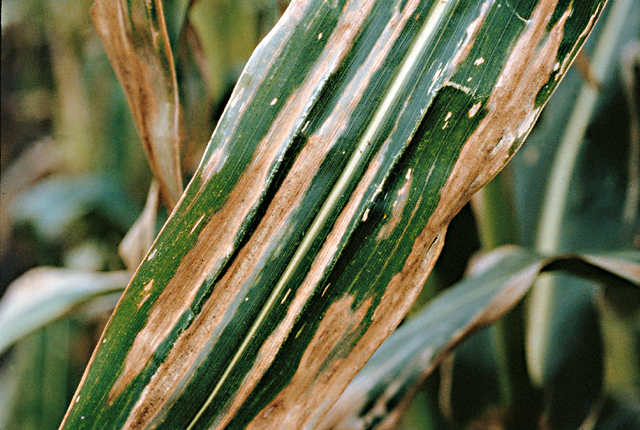
Stewart's wilt | Corn (Maize)
DISEASE: Stewart's wilt
HOST: Corn (Maize) (Zea mays)
PATHOGEN: Pantoea stewartii subsp. stewartii
PATHOGEN SYNONYM: Erwinia stewartii
SOURCE: D. White


